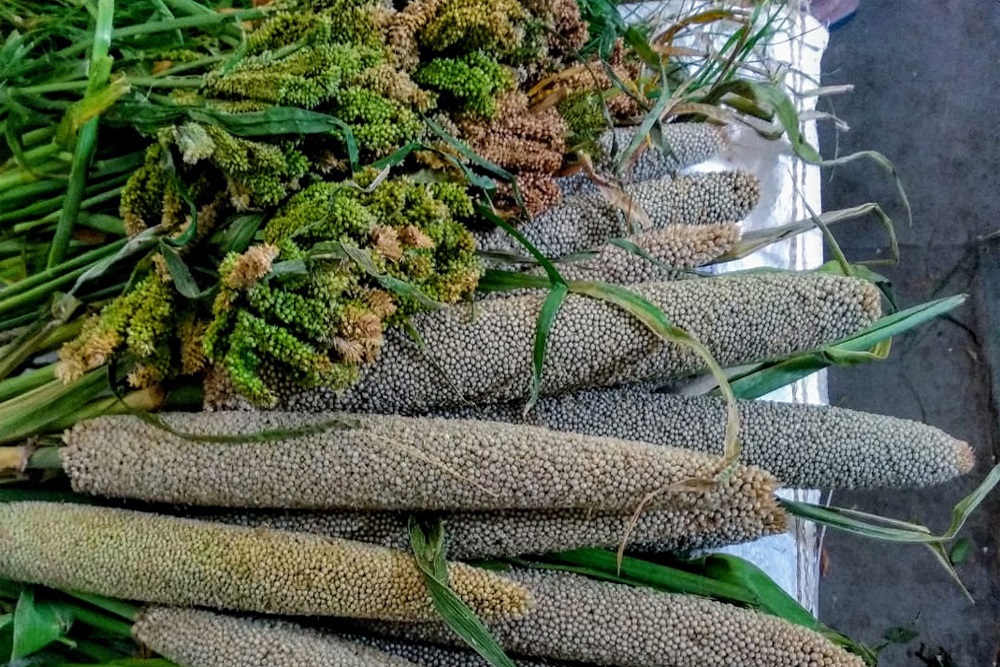Read full article By Nina Sengupta & Dwiji Guru @ Outlook Poshan 2.0 Photo Credit: Outlook Poshan 2.0
“Millets have been a part of the Indian diet for centuries and something our forefathers ate. Post-independence, the Green Revolution in the 60’s popularised the production of wheat and rice and over the decades, millets have been grown lesser and lesser. Millets are called “super cereals” since they are rich in vit b, protein and fibre.” —Narendra Modi, Prime Minister of India, August 30, 2019 What is a millet? It does not refer to a single grain, but range of grains bunched together under that general term millets to differentiate from the more familiar ones, like paddy or wheat. What is common to all millets are that they are hardy, usually rain-fed, and often grown as no-till crops. Traditionally, they are often grown as part of shifting cultivation practiced by the indigenous peoples. Even today indigenous peoples who lead a traditional lifestyle may grow 20-40 varieties of crops in just about an acre where half of them will be millets of various kinds. Today these crops are grown not only as part of shifting cultivation but still as hardy, mostly rain-fed crops. Though not all, several of them are dry land crops as well. The Culture Of Growing Millets Before we get to know what some of the more popular millets are or why they are considered healthy, it is essential to understand the cultural context of these grains. Humans while being hunter gatherers started practicing shifting cultivation centuries back. What they grew in these holdings nourished them by providing sources of carbohydrates, oil, fibres, and essential minerals. The grains they curated over time and grew, were a notch away from being wild – and held within them a high degree of genetic variations which allowed the crops to survive various environmental conditions and challenges, making them overall hardy, strong and resilient. These traits what made them strong also made them more nutritious as each grain contain a life-force that has grown naturally without the props of irrigation water, pesticide or other aids. These varieties or traits could continue to exist as seeds were saved, and sown over centuries. Debate arose over the benefits and adverse effects of shifting cultivation as land available to the indigenous peoples reduced, and the shifting cultivation cycles – i.e. time-gap between cultivations in a particular piece of land, reduced. As settled agriculture spread, it transitioned into cultivation of hybrid or ‘improved’ varieties of a handful of grains – that needed inputs like irrigation, fertilizers, pesticides etc. Simultaneously, efforts were made to wean people away from shifting cultivation practices as some believe that they have adverse effects on conservation of natural biota. However, some indigenous groups continued to practice shifting cultivation and grow among other things a wide range of grains or millets. Upon inquiring about the reason of their reluctance to stop such method of cultivation, one indigenous farmer from the Eastern Ghats had articulated this – several years back: ‘We, the tribal people, do not have scriptures, and structures that links us to our ancestors. We have our seeds – that are handed over to us from generations. They are our link to our ancestors, our history, and therefore our future’..Wild Greens To Wild Grains
Around the World, Asia-Pacific, India, Millets, Millets and Sorghum, Sorghum
